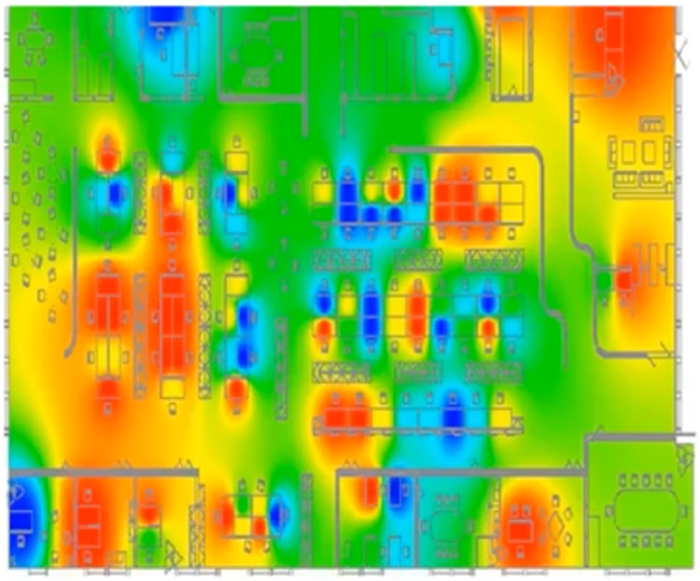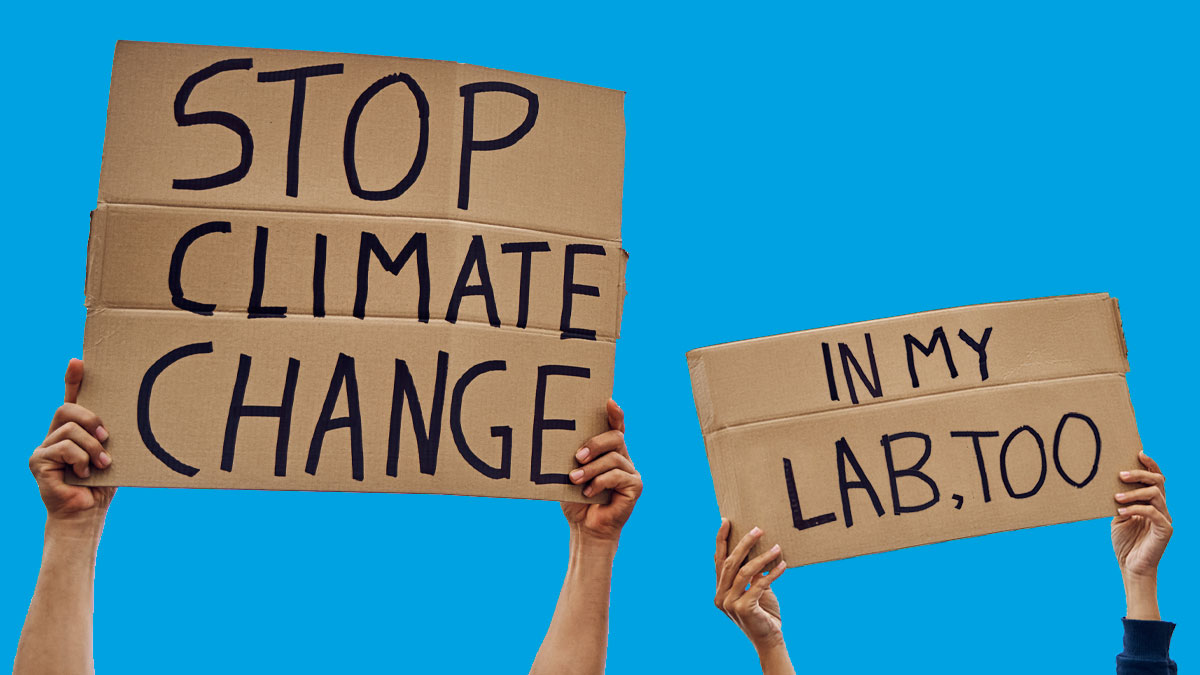How to Prevent Climate Change Inside a Laboratory
For people that live in a 4-season geography, summer days promise cloudless skies and sun-soaked windows. However, laboratories must consider how these cyclical changes can risk their analysis accuracy. Certainly, houseplants thrive in southern-facing windows, but that glorious summer radiant heat shining into an already instrument-ladened space can create unreliable microclimates.

Microclimates can take over your lab space, as shown by this heat map.
Too Hot, Too Humid, Too Variable
To achieve accurate results, scientists must prevent outside influences and confounding variables from skewing outcomes. One common means of controlling variables is to maintain consistent temperature and humidity.
Many organizations, including ISO, have guidelines for environmental conditions in the lab that need to be maintained for the comfort of staff, the performance of instruments, and to inhibit the growth of mold or bacteria.
When utilizing traditional tools and methods to monitor and control changes in a lab environment, it can be difficult to get a 24/7 lab-wide view. But the alternative, allowing inconsistent temperature and humidity to wreak havoc on lab processes, isn’t much better and could interrupt workflows, with a possible financial impact.
- By capturing granular, actionable data, labs can pre-emptively prepare to withstand the heat and humidity of summer and other environmental challenges.
Environmental Changes Draining Labs
Environmental changes have a big impact on research. In fact, 50% of R&D spend in the U.S. results in findings that are not reproducible – that’s $28.2 billion WASTED each year.1
One cause of irreproducible results is faulty instruments. Environmental changes may push instruments outside of their optimal guidelines, causing unexpected outcomes:
- Liquid handling systems can underdeliver by up to 35% in dry and hot environments.
- Dry conditions make instruments susceptible to electrostatic discharge, which can damage electronic equipment and cause erratic readings.
- High humidity allows moisture vapor to settle on components resulting in corrosion and component failure.
Inadequate monitoring may not only result in damage to equipment, but also means that your utilization of assets cannot be fully understood. For example, without granular monitoring of every freezer, it is not clear which are being used the most (possibly disrupting the internal temperature), and which are being underutilized. Retiring an unused -80°C freezer could save ~$1000 a year from electrical use alone, so capturing usable data could save improve your ROI.2
Capturing Precise Microclimate Data Throughout the Entire Lab
Many purpose-built labs have building management systems that monitor internal environmental changes. These systems have fixed locations of measurement, meaning there are a limited number of points where temperature and humidity are being recorded. This monitoring is insufficient in many cases, with environmental changes not being measured at a granular enough level to understand microclimates within the lab. Furthermore, adding more measurement points in your lab is often a costly process.
Compounding this, changes in the environment may trigger notifications to be sent to the company that manages the building instead of lab staff. For alerts and notifications to be helpful, they need to be sent to multiple individuals who can act and adjust their work schedules in real time. It can also help scientists and lab staff understand asset usage and identify assets that are over or underutilized via analytics. Better decisions can then be made on asset retirement, relocation, or new purchases.
Wireless Lab Monitoring Protects Labs in 3 Ways
Labs need actionable data that can lead to gains in productivity and contribute to a continuous chain of knowledge across instruments, lab environments, processes and study data. Additionally, real-time 24/7, wireless lab monitoring, like Asset Genius™, replaces the time-consuming process of manually collecting and recording data.
1) Optimizes Asset Productivity
- Monitor parameters to ensure that instruments are operating within manufacturer specifications.
- Enable data-driven decisions and justifications for redeploying or retiring assets, reducing repair and preventative maintenance costs.
- Easily move wireless sensors for troubleshooting or following lab redesigns.
2) Improves Research Reproducibility
- Capture granular data and identify trends with an interactive visualization dashboard.
- Maintain consistency by ensuring samples are not exposed to environmental variations.
3) Saves Scientists Time
- Automatically record data for audit trails and compliance reports.
- Alert scientists to environmental changes with real-time notifications via email or text, preventing unscheduled downtime.
- Make data-driven decisions from analytics stored in the cloud, accessible at any time, from any device.
Get more details about installing remote monitoring in your lab.
NOTES
https://taxfoundation.org/research-and-development-tax/
https://hbr.org/2016/09/bad-data-costs-the-u-s-3-trillion-per-year

